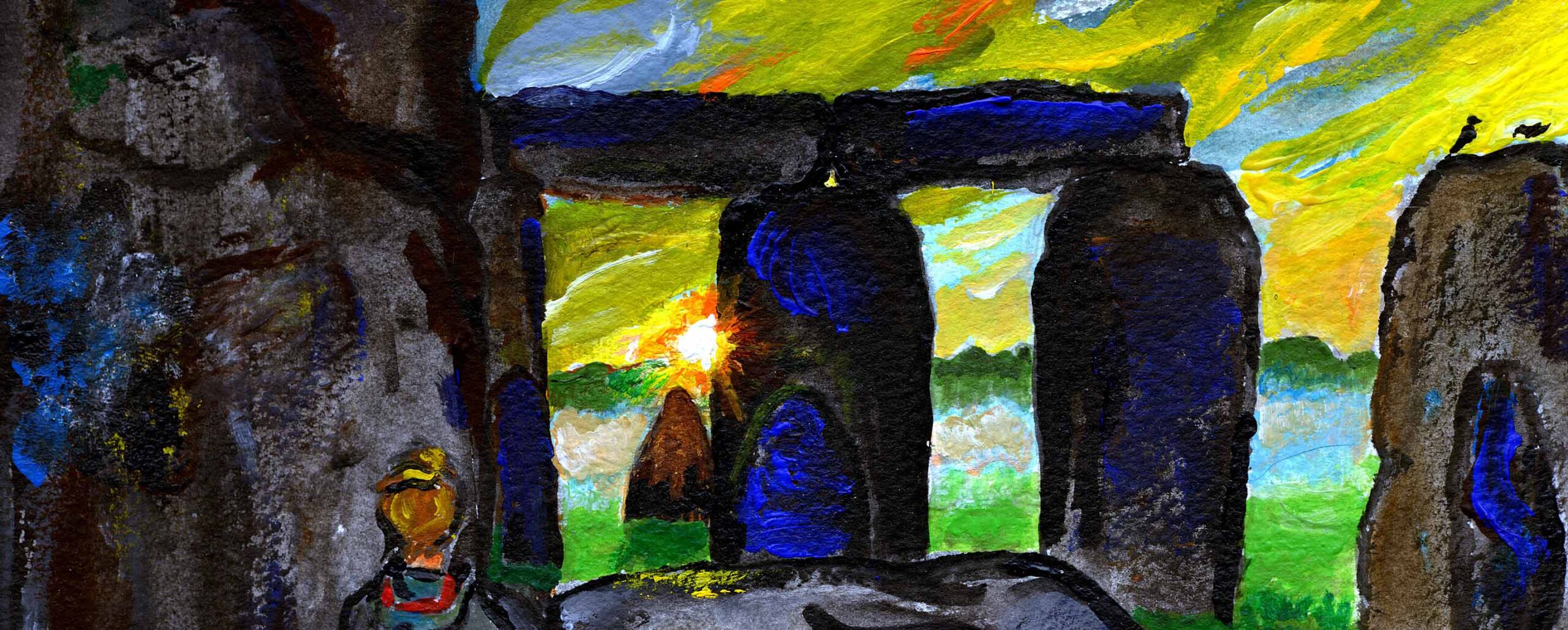Venus passes 3 degrees south of Saturn during the night of October 29/30.

The evolving early-night scene is shown in this diagram from the October pages of the last and best Astronomical Calendar. Of which, by the way, there are some copies left, so that you still have a chance to acquire one as a collector item.
The two planets were also in conjunction on January 9, in the morning sky, as we then discussed. Tthat time, Venus passed only a small fraction of a degree to the north of the distant giant planet.
Venus circles the Sun about 48 times faster than Saturn (their sidereal periods are 0.62 and 29.46 years). The conjunctions come at irregular intervals because of our own revolving viewpoint; usually there is one in each year, but in varying months. The last year with more than one was 2007; in fact there was a triple conjunction.

Sightlines are from Earth to Venus to Saturn. Earth and Venus are exaggerated 400 times in size, Saturn 50, the Sun 5. Stalks connect the planets to the ecliptic plane; the view is from 15° above that plane. Stalks connect the planets to the ecliptic plane; the view is from 15° above that plane. The dashed line is the vernal equinox direction.
Venus was out almost at its easternmost elongation when it caught up with Saturn, so it soon appeared to fall back, past Saturn on Aug. 9 and past the Sun; then, on the Sun’s other side, it caught up again with Saturn on Oct. 15.
And the last year when there was no Venus-Saturn conjunction was 1993. These conjunctions are listed on page 43 of Jean Meeu’s Astronomical Tables of the Sun, Moon, and Planets.

Is the peacock in honor of Venus? How long have the illustrations at the top of the page been changing?
I learned that the system will let me add pictures to the “header” and “randomize” them. So I think I don’t have control over which picture appears which time.
I’ll add some more. The limitation is that they’re recommended to be up to 1200 pixels wide and only 280 high, so I have to find ones that I can crop to this sort of wide-low aspect ratio.
Funny, I just noticed now the cecropia moth, not a peacock, at the top of the page as I’m about to forward this blog to my brother in FL as the new moon should be appearing soon close to these planets. I caught one this summer, the moth, that is; not a planet,and pressed it for preservation.
Ah, this time I see the moth … flying toward brilliant Venus in the gloaming, no doubt.
‘gloaming’???,,, but yes,,, moths are know to fly towards the light. Like Daedalus and Icarus, sometimes getting too close and meeting their demise. I caught this one in a jar and put it in the freezer to kill it,, then carefully mounted and pressed it between sheets of wax paper and in a telephone book under , as close as I could get, Cecropia.
Wish I could post a pic of it,,, but not just yet. It’s larva, or catepillar is a most absurd looking creature, You should google it or something to see it.
I’ve done many paintings of moth, butterfly, and fly larvae and cocoons. Apparently pictures can’t be inserted here. I thought of adding one for you to my website of pictures (http://www.universalworkshop.com/redliongallery/index.htm) but it’s too much trouble in that system (Dreamweaver). I hope before the end of this year to learn how to create a “gallery” in this system, WordPress.
Yeah, OK!, but I’ve just got to say, the view of an early crescent moon yesterday morning so close to Jupiter, but almost anything else this year for the BEST view….